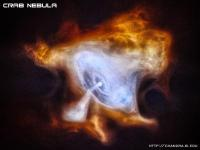SpaceX launches IXPE for NASA
- starshipsls

- Dec 7, 2021
- 4 min read
Updated: Dec 9, 2021

Credit: SpaceX

Credit: NASA
On Thursday, December 9 at 1am ET (6:00 UTC), SpaceX launched the IXPE (Imaging X-ray Polarimetry Explorer) mission for NASA atop a Falcon 9 rocket from Launch Complex 39A at Kennedy Space Center in Florida. This mission is part of America's longest-running satellite program, Explorer, that started with the first American satellite, Explorer 1, in 1958. This space telescope will study the polarization of X-rays coming out of objects such as black holes, galactic nuclei (AGN), microquasars, pulsars and pulsar wind nebulae, magnetars, accreting X-ray binaries, supernova remnants, and the Galactic center. Here is a part of the NASA IXPE website about polarization of light:
How is Light Polarized?
Polarization of light has to do with the direction that the electromagnetic field is vibrating. We use polarizing sunglasses to reduce the intensity of sunlight that becomes polarized when reflected off surfaces, e.g., the surface of a car. The electromagnetic field that makes up the light then vibrates mostly in one direction and sunglasses are designed to filter out that type of light. If you take off your sunglasses, you can rotate them one way and the intensity of the light will increase, rotate them the other (hopefully the way that you wear them), the intensity of the light will decrease.
Using the example of scattered light from the car, move the car very far away so that all you see is a bright dot. Is it possible to tell if the dot is from light scattered off the car or is it from a very bright light seen in the distance? The polarized sun glasses will give us the answer. Again, if we rotate the glasses and the intensity varies, then we would know that the light has been scattered, but if the light does not vary, then the bright spot is likely coming from a very bright light that is not polarized.
X-ray Polarization
Interestingly, X rays can also be polarized by scattering. As X-ray light passes through a material, the electric part of the electromagnetic wave causes electrons to emit a photon, giving the appearance that the original photon has changed direction, or has been scattered. This new photon will be polarized perpendicular to the plane formed by the original photon and the scattered one.
How can we put this esoteric knowledge to use? There are clouds near the Galactic center that are bright in X rays, but scientists do not totally understand why these clouds are bright at this point in time. One theory is that the clouds scatter X rays from the Galactic center. Due to the finite speed of light, the implication is that the Galactic Center was much brighter in the past. Determining whether these clouds are polarized with a particular direction, will confirm (disprove) this theory.
Another way that X rays can be polarized is when the paths of electrons moving close to the speed of light (relativistic electrons) are bent by a magnetic field. The electrons spiral in the field, emitting photons in the process; the electromagnetic field of these photons is polarized, vibrating in one direction. This phenomenon is called synchrotron radiation. For the nearest star, the Sun, polarization of visible light can be measured relatively easily, yielding detailed information about the magnetic field (see MSFC magnetograph). For objects farther away, details are not so easy, but if an object is known to a magnetic field, e.g., a pulsar (or even the Crab Pulsar in the Crab Nebula seen below), the polarization can tell us which way the magnetic field is pointing, because the linear polarization is perpendicular to the magnetic field since the electrons accelerate perpendicular to the magnetic field. But as the pulsar rotates, the direction of the magnetic field will change. Since there is more than one model for how the X rays are produced by this phenomenon and hence more than one prediction for how the polarization will change, scientists need actual polarization measurements to determine which model is correct.
How Do We Detect Polarized X-ray Light?
"IXPE will have three identical X-ray telescopes, with polarization detectors at each focus. The detectors, called Gas Pixel Detectors (GPD) are based on proportional counters (see Mullard Space Science Laboratory's Introduction to Proportional Counters). Polarized X rays interacting with a gaseous medium create photoelectons that are preferentially emitted in the polarization direction. Photoelectron tracks mark the path of the photoelectron from the position of the initial X-ray interaction to its stopping point. Analysis of the distribution of the initial directions of the tracks gives the degree of polarization and the position angle from the incident X ray."

Credit: NASA
The Benefits of Imaging
"The brightest extended X-ray sources can be polarimetrically imaged by IXPE. Examples include an Active-Galactic-Nucleus (AGN) jet, Pulsar Wind Nebulae (PWNe), and shell-type Supernova Remnants (SNR). Polarization maps of these sources will show the structure of the magnetic field of X-ray emitting regions, which may be different from regions emitting in radio or the visible portion of the spectrum. Imaging also yields a more sensitive measurement of a point source embedded in an extended source than a non-imaging system."

Credit: NASA
_edited_edited.jpg)




Comments